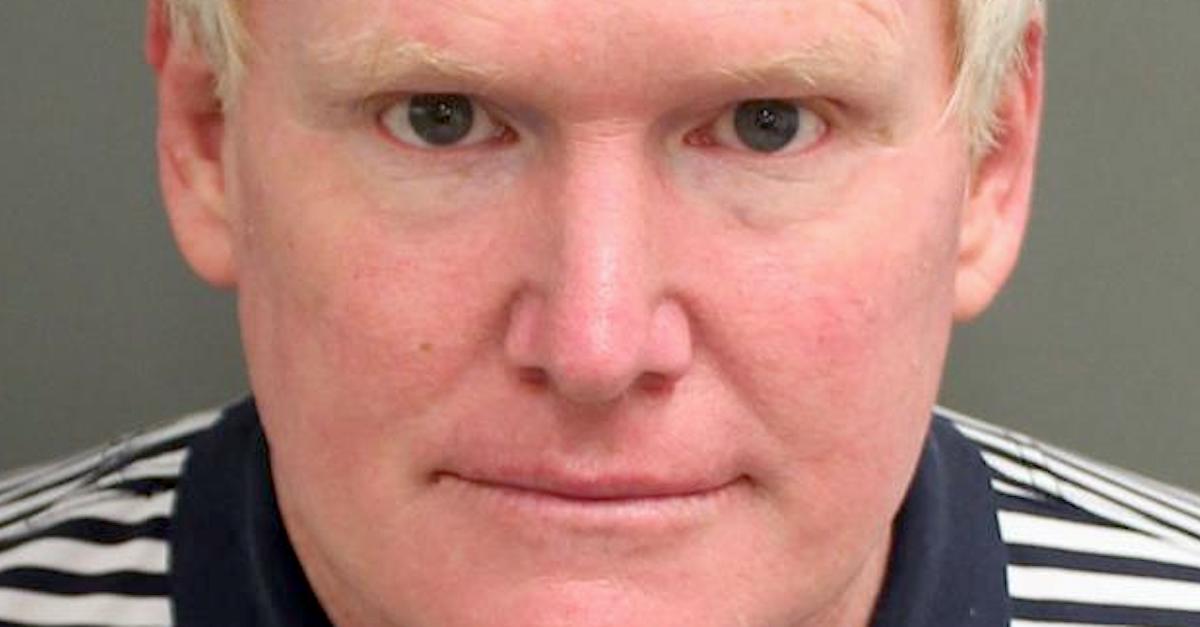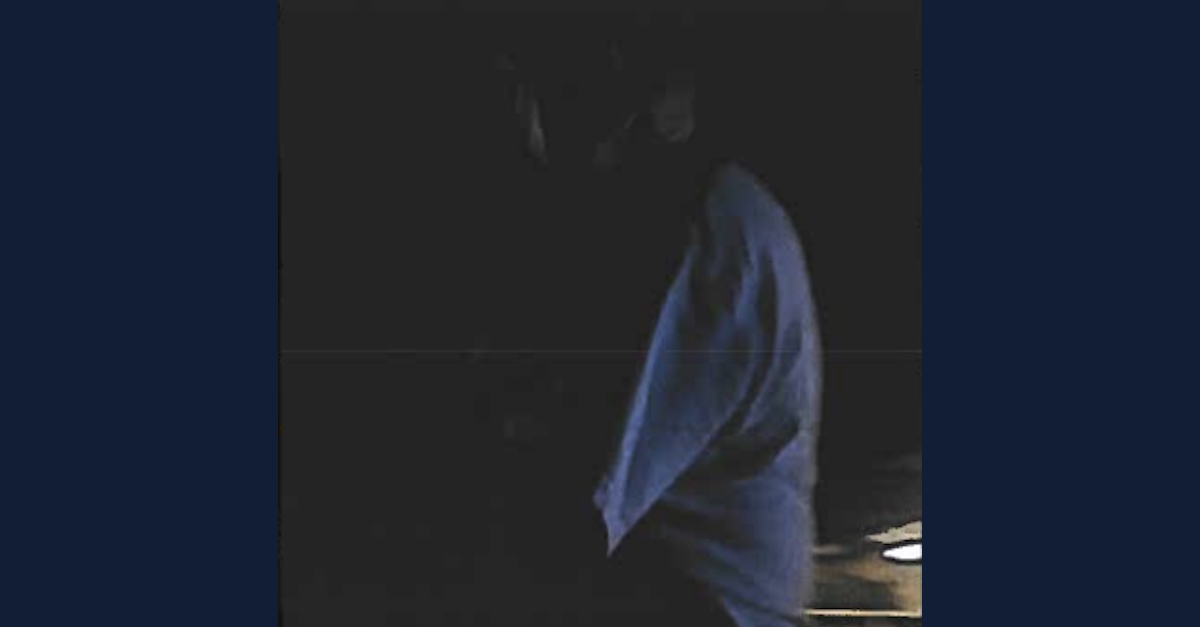
Alex Murdaugh appears in an Oct. 14, 2021 mugshot obtained from the Orange County, Fla. Department of Corrections.
Pre-trial court filings in the murder case of disbarred South Carolina attorney Alex Murdaugh showcase some of the key visual evidence the defense intends to use in their favor – and will have to contend with.
The 54-year-old fallen-from-grace legal scion stands accused of shooting and killing his wife, Margaret “Maggie” Murdaugh, 52, and youngest son Paul Murdaugh, 22, near the dog kennels on the family’s storied 1,770-acre hunting lodge during the midsummer of 2021.
Prosecutors allege the defendant’s son was killed with two shotgun blasts to the head, arm, and chest; that he killed his wife at around the same time with a series of rounds fired by a semi-automatic rifle.
Late last week, the defense filed a motion for sanctions that pushed to have testimony from the state’s preferred blood spatter expert thrown out. As the trial began on Monday morning with jury selection, a new motion from the defense also challenged a second blood spatter expert hired by the state.
At the center of the blood spatter dispute is the stained white T-shirt Murdaugh was wearing on the night of the slayings.

Alex Murdaugh wearing the disputed white T-shirt that is the source of the state’s blood spatter evidence
Following Murdaugh’s arrest, the shirt was subject to various tests by the state, ultimately cut into several pieces, and rendered nearly black – which both sides have acknowledged means the shirt is effectively destroyed and unsuitable for evidentiary purposes. A substantial part of the prosecution’s case against Murdaugh relies on photographs of the shirt prior to its destruction.
The Murdaugh T-shirt can be seen over time as it was subject to testing that destroyed its evidentiary value.
Both the defense and prosecution acknowledge the likely presence of blood on the shirt, but that is where the agreement between the parties stops.
The defense argues that any blood present is only on the bottom third and was transferred there when Murdaugh touched the bodies of his wife and son after he found them and “frantically checked them for signs of life,” according to a defense motion filed last November.
Meanwhile, prosecutors say the front of the shirt has over 100 high-velocity blood spatter stains that likely occurred from the shotgun blasts that killed Paul Murdaugh – a conclusion based on the analysis of Tom Bevel, a former Oklahoma police officer who owns and operates a self-described forensic education and consulting company.
The defense has challenged Bevel’s credentials and methodology in numerous pre-trial motions, noting that in January 2022 he issued a report that said the stains on the shirt were “consistent with transfers and not back spatters from a bullet wound.”
The defense argued in motions to limit Bevel’s testimony that it was only after an in-person visit from South Carolina law enforcement that he changed his mind about the blood spatter on the shirt. The defense also claims the state “had to lie to him” about what state-ordered testing of the shirt showed.
In last week’s motion for sanctions, the defense said tests on “[e]very cutting” from the upper two-thirds of the shirt “tested negative for human blood,” noting the HemaTrace test is “highly sensitive” and “able to detect as little as four micrograms of blood in a sample,” roughly 15 times smaller than a single grain of table salt.
Murdaugh’s defense claims they were unaware of the shirt’s slow destruction until they requested an independent laboratory analysis of the garment late last year. In response, the state said the shirt had inadvertently “turned black” and could not be subject to meaningful microscopic photography. In their late November motion, the defense describes the shirt as “completely blue” with stains that were “blue, fuzzy, diffuse, and bled out, their features lost forever.” Another defense motion describes the shirt as “violet.”
A photograph of the disputed Murdaugh T-shirt taken by the defense from inside a law enforcement facility.
The disputed testimony about the upper two-thirds of the shirt, the defense says, is premised on the state’s argument the defendant shot and killed his son at “pointblank range” in close quarters – inside of a closet – and the resulting shotgun blasts left Paul Murdaugh’s blood spattered on the closet “door, walls, and ceiling.”
Last week’s defense motion contains Bevel’s preliminary report, which notes the presence of tissue, “blood volume” and body fluids and says the location of the remains and fired shotgun shells “would place the shooter standing in or slightly outside the room’s door approximately midline of the feed room” for the first shot and “outside the door to the west side of entry” for the second, “immediately terminal” shot.
Several images from a defense motion show the closet where Paul Murdaugh was shot and killed.
Additional, up-close images of the closet where Paul Murdaugh was killed.
“[I]t is exceedingly difficult to explain how Mr. Murdaugh could have murdered Paul with multiple 12-gauge shotgun blasts at pointblank range in a small closet without getting at least some blood spattered on his shirt,” the November 2022 defense motion argues.
A crime scene reconstruction chart of the Murdaugh murders from a defense motion.
Defense attorneys Dick Harpootlian and Jim Griffin previously scored a victory for their client by way of a court order that demanded the state and Bevel turn over myriad discovery documents related to the analysis of the T-shirt. In last week’s motion for sanctions, the defense claimed that both investigators and their underlying expert witness had violated the judge’s order on several points – moving to have Bevel’s blood spatter testimony kept away from jurors entirely. A motion in limine – a motion that is filed prior to jurors being seated – was also filed to firm up the defense’s request that Bevel be disallowed from giving expert testimony.
On Monday morning, as jury selection began, the defense filed a motion in limine seeking to exclude another expert witness who the state is attempting to have testify about the blood spatter evidence.
“The state seeks to present expert opinion testimony regarding blood spatter from Deputy [Kenneth Lee] Kinsey to support its crime scene reconstruction,” the filing says. “It is essential to the state’s theory that the cuttings from the upper part of the T-shirt have blood spatter. Recognizing Mr. Bevel’s testimony may be excluded for the litany of reasons set forth in [Murdaugh’s] motion for sanctions and his motion in limine regarding Mr. Bevel’s testimony, the state is attempting to back door in Mr. Bevel’s blood spatter testimony through Deputy Kinsey.”
According to the defense, Kinsey’s potential expert testimony “is organized around the same 12 ‘investigative questions’ Mr. Bevel used in his report and essentially paraphrases Mr. Bevel’s opinions on those questions.” The motion goes on to allege that the deputy, when analyzing the evidence for a blood spatter determination, simply relied on Bevel’s own Photoshop-enabled manipulation of the original images of the stained T-shirt – and says the state has produced no evidence or records that Kinsey conducted any additional, independent research.
“To the extent Deputy Kinsey’s opinions regarding high velocity impact spatter are derived from Mr. Bevel’s Photoshop enhancements of photographs of the T-shirt, his opinion testimony regarding high impact spatter must be excluded,” the motion concludes, citing precedent and constitutional civil liberties issues.
[images via Florida Department of corrections; Alex Murdaugh defense motions]